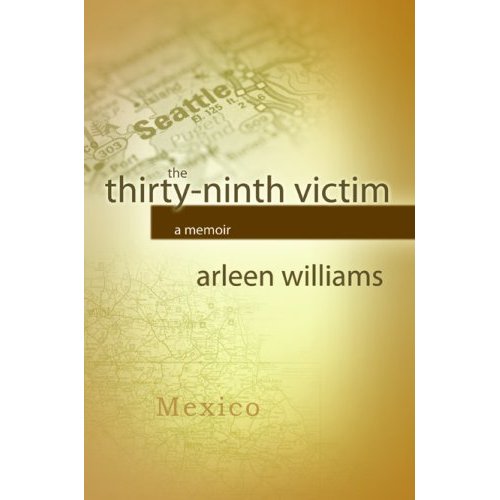Hello, gang –
Anne here. In writing yesterday’s post, I think I strained something while stretching to make yesterday’s analogies work. My credulity perhaps, or yours. That will teach me not to rush off and write a post the instant after I receive bad news, eh?
The timing couldn’t be better for me to take a day off, though — FAAB (Friend of Author! Author! Blog) Joel Derfner, better known to us here as witty commenter and fabulous blogger Faustus, MD has graciously written us a guest post for today.
And on a lulu of a topic I seldom address, too: getting permission to quote songs in your book.
Was that giant sucking nose I just heard your collective gasp at the realization that you might conceivably need such permission — and that obtaining it might be the author’s responsibility? Read on, MacDuff.
But first, for those of you who missed my crows of joy last week, Joel’s second book, Swish: My Quest to Became the Gayest Person Ever has just been released by Broadway Books, a division of Random House. And hoo boy, has it been garnering some enviable reviews. Lookee:
“Whether recounting his stint at New York’s cheerleading squad or the eye-opening week he spent undercover at a North Carolina “ex-gay” ministry, his inner terrain of hope and devastation is recognizable to anyone who has felt the scrutiny of peers. In one typically sidesplitting passage Derfner leads his step aerobics class, seemingly with unflappable confidence, while harboring private fantasies of boosting student morale with a tray of homemade brownies.
“‘I have these moments of insecurity quite often,’ Derfner admits. ‘If you can point to your flaws in a way that reveals them to be universal, then your flaws are not unattractive — just human.’ Whether he’s the next Noël Coward or a male Bridget Jones, one thing is clear: Queer America needs Derfner. In a culture where we disguise vulnerability with physical perfection and material success, Derfner skewers heartache with Wildean wit.” — Out.com
“These witty, fun and poignant essays knocked me on my ass more than once. I desperately want to hang out with him.” — Booksplosion!
“The ultimate swish-quest, indeed, though it makes for more than a delightfully breezy, campy read, for the humorous anecdotes morph into movingly evocative memoirs when, for instance, he recalls his liberal, civil-rights-activist parents’ response to his teenage coming out: Not At All Good. His mother never accepted it, and he and she never achieved more than an uneasy détente. Thus this superficially facile book becomes more than the sum of its parts, as Derfner indicates when he observes, ‘Writing about my quest to become the gayest person ever led me to realize I was actually on a quest to become myself.’” — Booklist
May all of our books be greeted with such delighted enthusiasm. (And make sure to let me know when they do — I love gloating over readers’ successes.) Both Swish and Joel’s hilarious first book, Gay Haiku are available on Amazon, or for those of you who prefer to deal with independent bookstores, Powell’s.
Take it away, Joel!
You know how you open a book and there are quotes from song lyrics all over the place? And how you figure the author just sent the manuscript in and somebody at the publishing company took care of getting permission to quote those lyrics?
You’re wrong.
I mean, you may not be wrong as far as, say, Stephen King is concerned. I don’t know. But excepting extraordinary cases the author is usually contractually obligated to get licenses for anything s/he quotes. (S/he is also contractually obligated, by the way, to pay for licenses for anything he quotes.)
Okay, I thought when I discovered this as I was finishing my book, that’s a hideous miscarriage of justice, but worse things have happened in the world. I mean, it’s not like I have to go camping or anything. It was in this frame of mind that I submitted my manuscript, which quoted lyrics from nine songs. I’d even taken the time to footnote songwriters and publication dates, just so Random House would see how diligent I was being.
But when my editor gave me his feedback, one of the things he said was, “Getting permissions can sometimes be tricky, so you might want to cut some of these. Actually, you might want to cut all of them.”
To appease him I went through the manuscript and cut as many of the lyrics as I could, replacing them with non-copyright-infringing prose references to the songs in question. Of course I knew he was worrying needlessly, but I am nothing if not accommodating (okay that’s totally a lie I’m not accommodating at all but I worry that if I don’t obey him he’ll stop giving me chocolate every time I show up at his office), so I didn’t have a problem doing this. In the end there was only one lyric I felt couldn’t be cut without doing real damage, “Without You” on pages 115-6.
THANK ^%$*ING GOD.
I tell you, I might as well have been trying to get my hands on the Hope Diamond.
At first it wasn’t so difficult. After a half hour or so with the Internet I figured out that the copyright was owned by a company (we’ll call it Company A) in Britain. My editor’s assistant called them (because I live in the ghetto and have a ghetto phone plan that would sooner let me destroy its headquarters in a rain of fire than allow me to call a country in Europe) and got the name of the guy I needed to talk to about permissions.
So far, so good.
I e-mailed the guy— I’ll call him Guy A, though over the course of time I would find many more names for him—asking him what I needed to do. He e-mailed back the next day and said I needed to get in touch with Company B, which managed Company A’s licensing in the U.S. I went to Company B’s website and put in a licensing request on their convenient licensing request page.
A week later I’d heard nothing. I was not particularly concerned; I assumed that the workings of Company B, like the workings of most companies, functioned at the speed of stalactite creation. But since I hadn’t even gotten an automated response I figured I might as well check in. “Oh, you’ll hear back a week or two from now,” said Guy B when I called.
Three weeks later I’d heard nothing. “You’ll hear back soon,” said Guy B. When I asked whether I could speak to the person in charge of licensing just in case, he said, “Okay, I’ll transfer you to Gal C.” I ended up leaving a very friendly message on Gal C’s voice mail asking her to call or e-mail me.
Two weeks later, no word.
I e-mailed Gal C again.
Nothing.
I cced Guy A at Company A asking him whether he had any suggestions. His response was, “I’m sorry, I have no ideas for you.”
Guy A can go jump in a lake, I thought.
Finally I e-mailed Gal C and cced Guy A, hoping that he was in some nebulous position of authority over her and that this move would inspire her to action. Whether because of my e-mail or not, she wrote back and asked for a few pieces of information, which I sent immediately.
I e-mailed again a month later.
And again a week and a half later.
I called again a week after that but when Guy B answered the phone he said, “We’re moving offices, so she doesn’t have a phone now.”
“Well,” I said, “can I just leave her a voice mail?”
“She doesn’t have voice mail either. Can I take a message for her?”
I left one, not believing for a moment it would do any good.
A few weeks later, I was visiting friends in Los Angeles and had the brilliant idea of actually going to the physical headquarters of Company B and asking to speak with Gal C. She wouldn’t be able to ignore me if I was standing in front of her.
So of course the office was closed. Nobody was there. At 11:00 a.m. on a Tuesday.
I e-mailed Gal C again a week later (ccing Guy A again)—oh, God, you know what? This is so incredibly tedious I can’t even bring myself to go on. Suffice it to say that I finally got permission from Gal C at Company B to use the lyrics (for $300).
Then like two months before publication I got an e-mail from my editor’s assistant saying that so-and-so in the legal department wanted to know whether this permission applied to Canada as well or just the United States. Company B said no, it was just for the U.S., and they had no idea who I should talk to for Canada. Company A said the same thing.
In the end I had to call Guy D and Gal E at Companies C and D in the U.S. (neither of them knew the answer to my question, and Gal E actually began explaining the basics of copyright law to me as if I were twelve, except she kept getting things wrong). Then I called Guys F, G, and H at Companies E, F, and G in Canada.
By this point it was too late to make any changes to the book, so all I could do was show that I was making a good-faith effort to secure permission, so I asked Gal I from Company G to have Gal J e-mail me saying that they’d received my request. Gal J did so and I forwarded the e-mail to my editor’s assistant.
To get permission to quote twelve lines of one lyric has taken me six months, countless phone calls, and probably two years of my lifespan. And $300 plus whatever Company G says I owe them.
I am never, ever, ever going to quote any copyrighted material in anything I write ever, ever again.
Addendum:
I just got an e-mail from Gal J at Company G. I have permission to use the lyrics in Canada.
Once I send them $755.
Remember that I had to pay Company B $300.
Right now I have $34.62 in my bank account.
On the one hand, I believe that Company G is much, much better at its job than Company B.
On the other hand, Company G’s superiority obviously consists not only in communicating much more responsibly but also in getting its clients much more money.
I am never, ever, ever going to quote any copyrighted material in anything I write ever, ever again.
Swish: My Quest to Become the Gayest Person Ever and Gay Haiku author Joel Derfner is from South Carolina, where his great-grandmother had an affair with George Gershwin. After fleeing the south as soon as he possibly could, he got a B.A. in linguistics from Harvard. A year after he graduated, his thesis on the Abkhaz language was shown to be completely wrong, as the word he had been translating as “who” turned out to be not a noun but a verb. Realizing that linguistics was not his métier, he moved to New York to get an M.F.A. in musical theater writing from the Tisch School of the Arts.
Musicals for which he has written the scores have been produced in London, New York, and various cities in between (going counterclockwise). In an attempt to become the gayest person ever, he joined Cheer New York, New York’s gay and lesbian cheerleading squad, but eventually he had to leave because he was too depressed. In desperation, he started knitting and teaching aerobics, though not at the same time. He hopes to come to a bad end.













